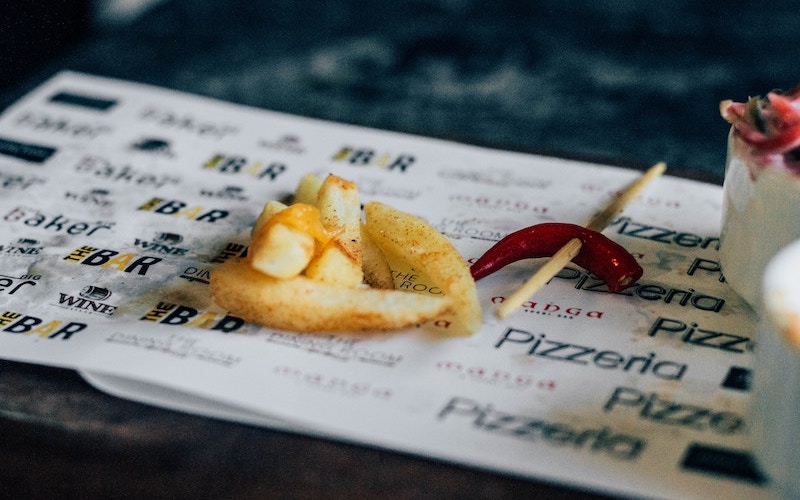Gaining Power over Your Diet by Seeing It for What It Really Is
Episode #1 of the course Hack your diet: Using nutrition science to live healthier, longer, and diet-free by John Robin
Welcome to what I promise will be a fun, engaging course on diet. Over the next ten days, we will explore hacks that can equip you with insights to apply to how you eat, so you can eat better.
My name is John Robin. I’m an author and entrepreneur. I especially enjoy writing educational nonfiction. I’ve now written eleven Highbrow courses about writing, math, science, productivity, and health, including my most recent, “Sleep Hacks: Using Science to Improve Your Sleep.”
It seems fitting that in my last course of covering the essentials of sleep as a component of healthy living, I now turn to the other scepter of living well: diet.
So, here we go!
Dopamine Highs and Junk Food
Many of us eat for the taste. When we think of food, we think of it in terms of a reward: the sweet, fruity taste of New York cheesecake topped with strawberry sauce; a juicy bite into a cheeseburger after a long day of hard work; and the refreshing burn of a beer after mowing the lawn.
All these thoughts relate to pleasure. Pleasure is a feeling created by our brain, and one of the ways it is induced is through eating foods we enjoy. The parts of our brain that create pleasure are located in the inner brain, within a structure called the hypothalamus. The hypothalamus is also where our other most basic emotions are thought to originate: fear, anger, hunger, and thirst.
The so-called “pleasure center” in the hypothalamus was discovered in 1954 by American psychologists James Olds and Peter Milner. This center, called the nucleus accumbens, is also deeply tied to addiction. The nucleus accumbens forms part of “reward pathways,” also known as dopamine pathways. Dopamine is a chemical that helps certain brain cells communicate. In the case of the reward pathways, these brain cells use dopamine.
What’s important to take away from all this? More often than not, the foods we associate with pleasure are the overprocessed, overpriced products that the food industry has honed to give maximal dopamine hits. Those junk foods are expertly formulated to keep people coming back for more.
“Junk food,” as it is called, should really be named “junkie food,” since it has been formulated specifically to give you as intense a hit to the reward pathways in your brain as cocaine or alcohol.
Why is this a problem? Mainly, this kind of eating response is a leading factor in the obesity epidemic—about ⅓ of the US population is obese, and the estimate for health care relating to obesity-compounded issues is at $150 billion! We are addicted to the taste of good food as a conditioned response to the basic instinct of hunger. Unfortunately, when we follow this conditioned response and reach for a juicy cheeseburger and fries, we fill our body with high salt and high fat. Add extra cola or ice cream dessert, and you’re adding high sugar as well. What’s worse: For all the high hits of pleasurable calories, you’re getting fewer of the nutrients your body actually needs.
How do you get away from this? You can train yourself, with practice, to enjoy the taste of healthy food. Mindfulness meditation relating to consuming this food will be part of the training! In fact, that will be exactly what tomorrow’s lesson is about.
Today before we go, let’s form an action plan. We’re going to end each lesson with one of these, so by the end of the course, you’ll have ten in place to sustain a new science-based journey with food.
Action: Put Junk Food in Its Place by Being Aware of It
Junk food is junk. Unless you want to continue consuming junk, now is the time to get out of its grasp. It starts with a new perception, from which you’ll build everything.
Jack LaLanne, the fitness and health guru who gave us the “jumping jack,” is famous for having said: “If it tastes good, spit it out.”
Yikes! That’s overkill!
But we can still try to learn from Jack because he had a phenomenal diet.
Your first action, then, is to simply be aware of how much junk food you eat. Be aware of its taste and the effect it is having on you. Don’t beat yourself up over this! True power comes when you see the truth of your diet, what you’re eating, and what effect it’s having on you. This will be your foundation as we delve into the remaining lessons of this course.
Tomorrow, we’ll see just how taste can be trained and how this gives you all the power to make good food taste better than junk food ever could.
Recommended book
Brain over Binge by Kathryn Hansen
Share with friends

